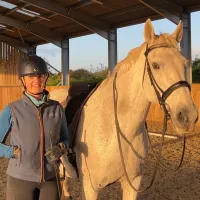Spooky horse transformations
Join the 000's of riders who have
fallen back in love with riding their
confident and connected horses
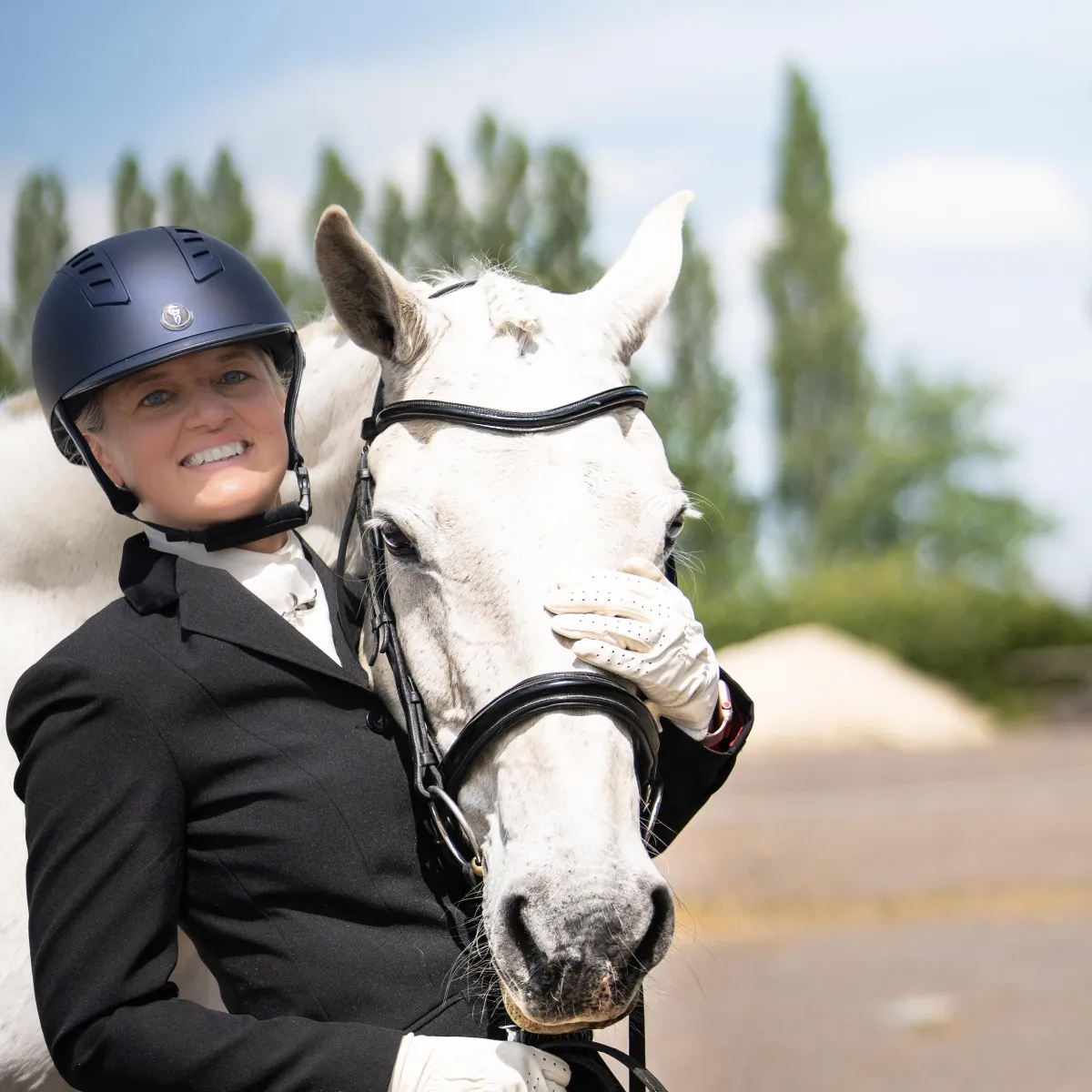
Lyla Cansfield
Hi, I am Lyla and I believe that success with horses comes from understanding and connection.
I specialise in providing a unique blend of horsemanship principles alongside sensitively applied traditional ground and ridden techniques for riders of any discipline to achieve transformational results with their horses.
I believe that horses are happier and will respond better to training in any sphere when they understand your expectations and you understand theirs.
Enquire now for the complete spooky horses course
Ready to make a start falling back in love with riding your horse?
Tap the button below to find out more...
Services

Online Coaching
Online courses with coaching options, you choose how much support you want to acheive your goals

1-2-1 consultations
Consultations and problem solving sessions, online or live at your yard
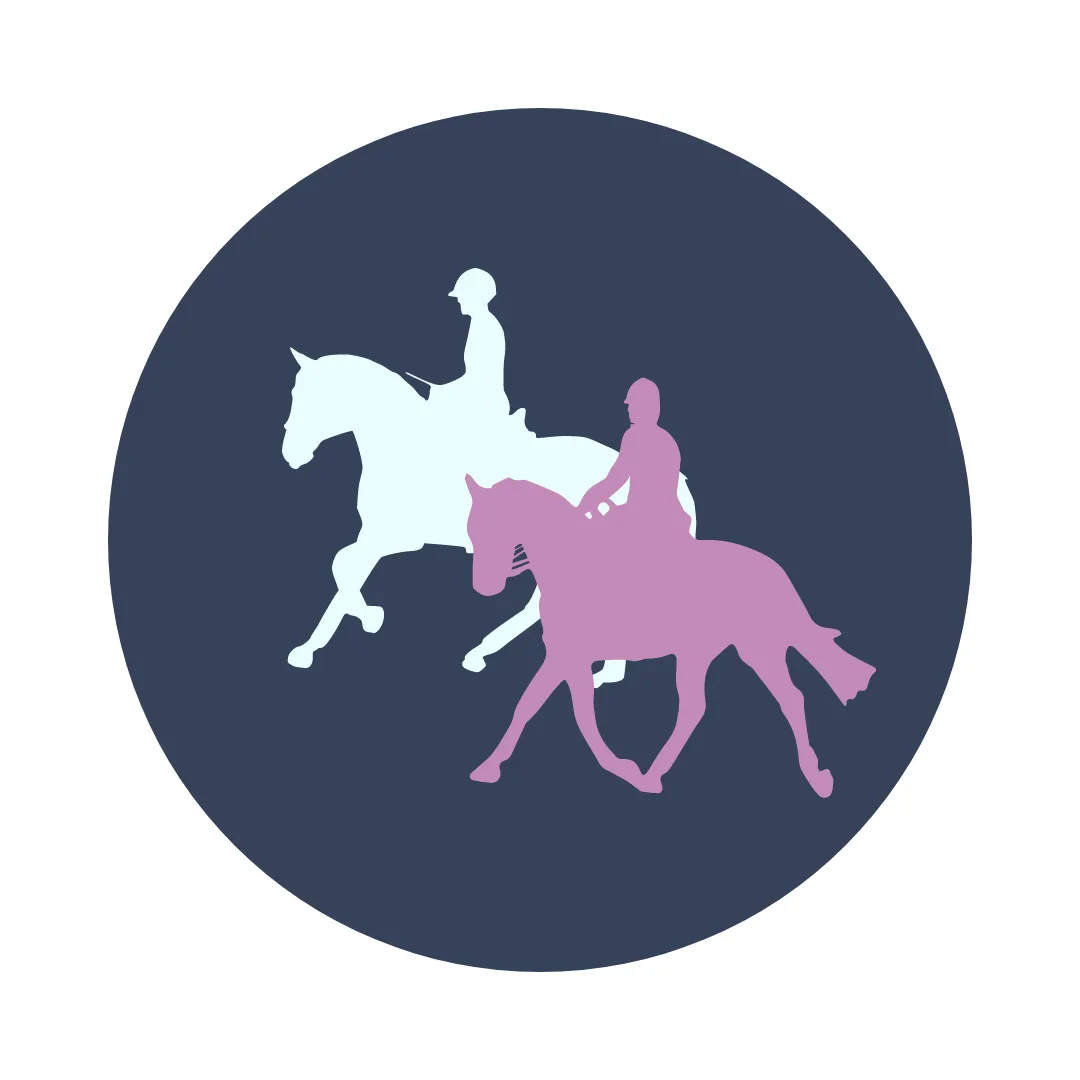
clinics & Events
Summer camps and clinics in the UK and internationally
CLIENT RESULTS
Happy Clients
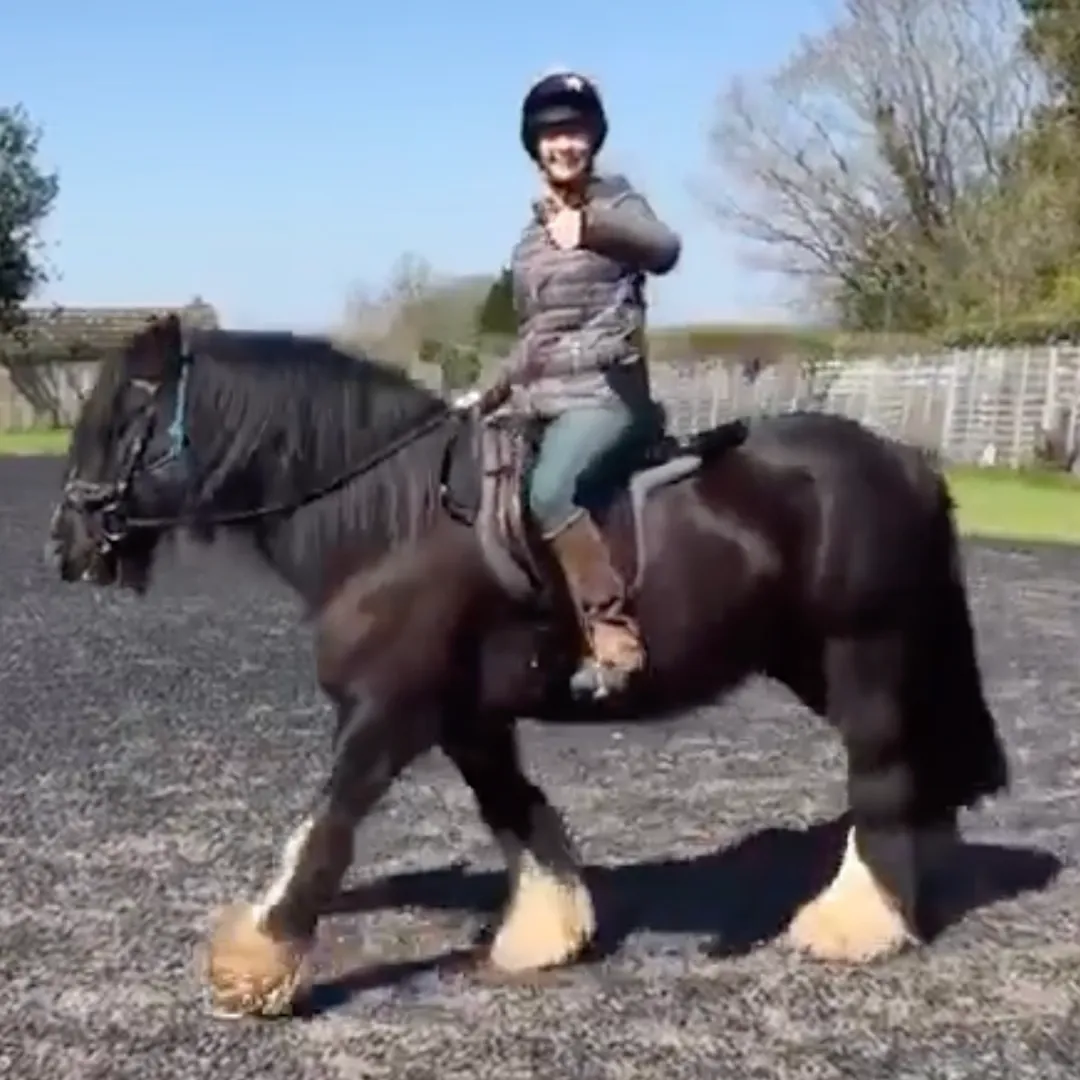
"I am much happier to ride my horse now that I understand when he is relaxed and connected. How to read his body language from the saddle and what to do if he becomes anxious."
Helen & Troy
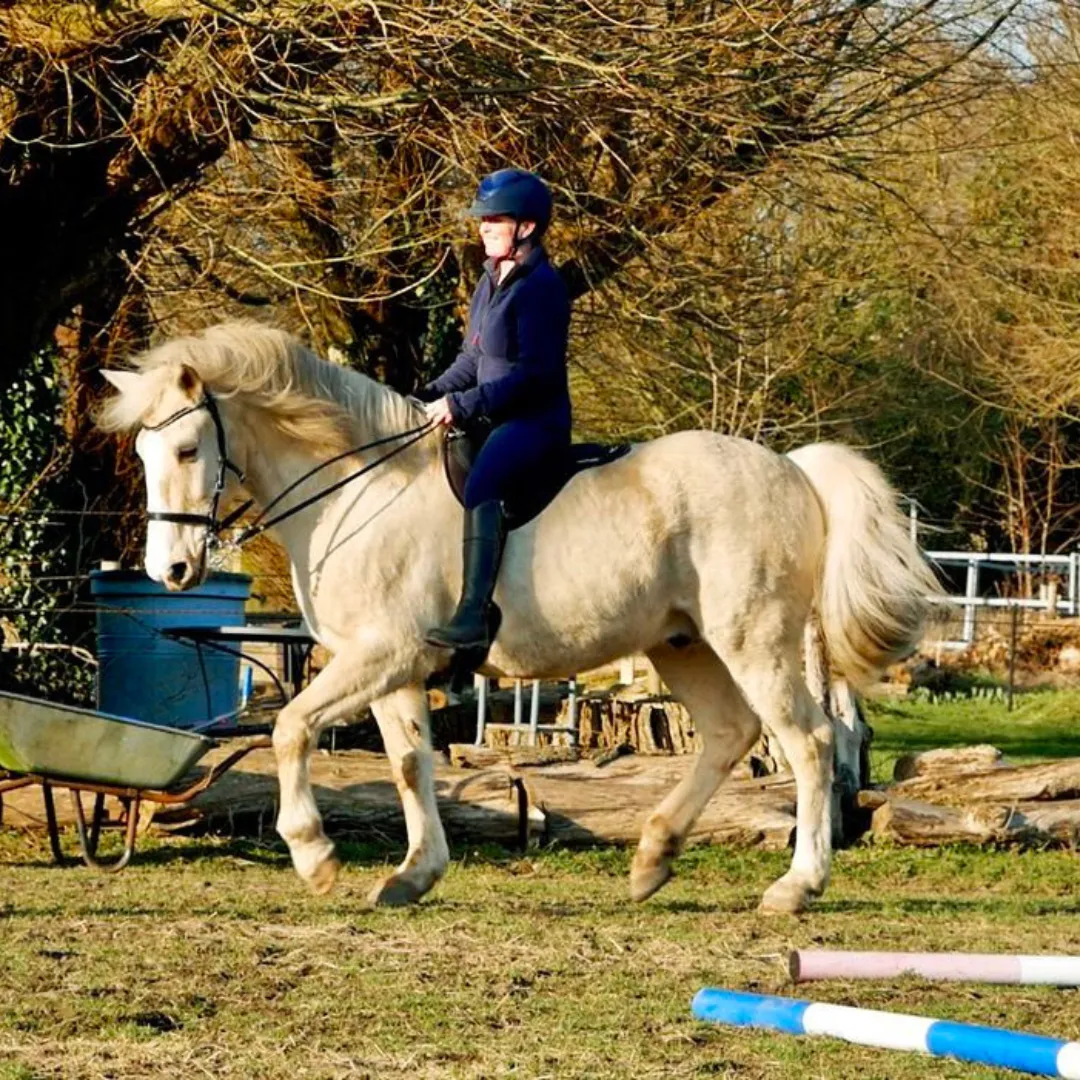
"I feel liberated. We've been stuck in the local equestrian centre for most of our schooling sessions, now I can benefit from riding in other environments and places."
Zaria & Amigo
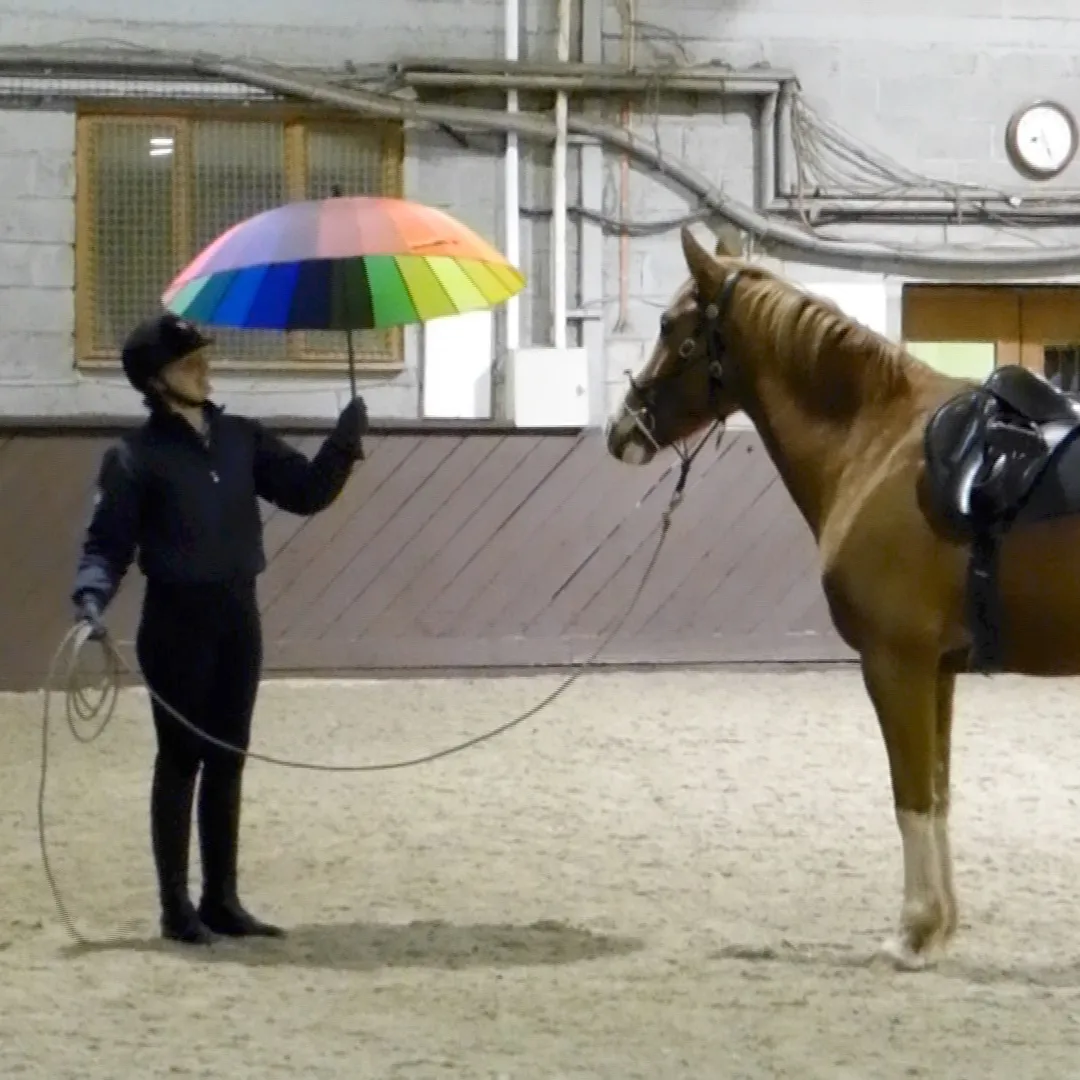
Why groundwork is essential to building your riding confidence
In my last blog 5 Keys to Building Your Confidence I looked at some key things you can do to boost your confidence levels with your horse. One of these was…Do Groundwork
So why Groundwork?
If you want to ride, why would you put the time into groundwork?
You can see your horse! 👀OK so this sounds obvious but really, you can see if your horse is calm or not, you can make assessments on if he’s safe to ride or not. It becomes a considered assessment rather than a hope and a prayer! 🙏
Setting your horse up with a method of communication on the ground can directly affect the quality of your ridden communication. If you can teach your horse some techniques that will help him be calm on the ground then you can translate these to do the same from his back. Also, if needs be you can jump off and get him calm again from the ground.
The less confidence you have, the more self confident you need your horse to be, doing things on the ground that build your horses confidence will help your horse be able to fill in for you in those ‘oh sh**’ moments!! 🙊
Nowadays there are a million and one options of things you can do from the ground with your horse, and honestly, I feel really strongly that there isn’t any one way that’s ‘right’. So whether you are into lunging, long reining, joining up, TRT’ing (!) , playing 3, 5 or 7 games, clicker training, liberty training, doing classical in-hand work or any others I haven’t mentioned what’s important is that you have some exercises that relax your horse and help him/her find calm. ALL of these methods have techniques that can do that, how well each one will work will depend on two things - you and your horse!!
Let’s look at you first…🤓
Whatever technique you decide to apply, it needs to make sense to you and you need to know what you are trying to achieve. If we are looking for your horse to be safe to ride then I would suggest that you be looking to achieve the following:-
A calm horse that can stand still on a loose rope/rein without being held still (this is a great test of that self confidence I mentioned earlier)
Following on from this a horse that can stand still throughout the mounting process
A horse that can maintain a walk, trot, canter in a relaxed, balanced manner without taking off (if you are only going to ride in walk and trot then you can focus on these but remember to check the canter just in case it happens!). If you are planning on jumping then check this as well.
When looking at your horse from the ground ask yourself these questions…
Can I ride that?
Would I want to ride that?
The answers to these two might be very different and if the answer to one of these questions is 'No' then don’t get on!! 😱
Right now let’s look at your horse…🐴
How well the technique is going to work for you depends on knowing your horse and following the technique through all the way to relaxation. Here are some common examples that can either work brilliantly or not work at all depending on how they are applied…
Desensitisation and asking/waiting for your horse to lower his head ☂️🌪💥
The theory here is that when a horse lowers their head they release endorphins that will help the horse to relax. This is brilliant and applied correctly can really help a horse find relaxation, particularly if they are a ‘head in the sky’ type of horse.
BUT (!!) ...
Some horses will learn to put their head down without relaxing, you’ll often find with these ones the head will bob straight back up again the next instant or they will stay with the head down but they are not blinking and only taking shallow, fearful breaths. So, it’s important to observe when the horse has gone all the way through to relaxation, blinking, breathing deeply, sighing, licking and chewing before you consider the exercise a success.
Lunging until relaxed ⭕️
This time honoured solution can be very effective, the theory being that horses on adrenaline need to move their feet in order to gain relaxation so lunging before getting on can be really beneficial particularly for a horse that has lots of excess energy.
BUT (!!)
Some horses don’t know how to find relaxation in motion and will just move without actually becoming more relaxed, in this case the horse just gets fitter and then will need even more lunging!
What’s important here is to reward the horse and finish lunging when they have found some relaxation in motion, signs of this would be one or all of the following...
Slowing downLowering of the head carriage,Blowing out through his noseTail swinging5 minutes of lunging and rewarding the horse (by stopping) when he is relaxed will be more effective to calm your horse than 20 minutes of lunging and not finding any relaxation.

Lateral manoeuvres to relax the horse ↔️
These can be done on the ground as well as ridden and include things like shoulder-in, leg yield, yielding the hindquarters/forequarters and anything sideways.
This technique uses the understanding that when a horse is tense/worried he will stay tense through the middle part of his body (barrel), and keep his hind legs ‘base wide’ ready to run! By asking him to move laterally we get the barrel to bend, unwind the tension and get the hind legs to cross.
But (!!)
Some horses will find the additional pressure of leg and hand in an already tense situation will be too much and they will become more tense.
Rewarding signs like the horse becoming softer in the hand and to the leg, bending more easily, blowing out through his nose will stop this happening. In this case, reward by releasing the pressure from the rein/leg and allowing the horse to travel straight for a period of time or stop altogether.
I hope this blog encourages you to explore what groundwork might help you and your horse.
Happy riding 🏇
Before trying any training technique it is important to rule out pain or discomfort. Saddle fit, teeth, back, hoof balance and lameness issues should all be checked by a qualified professional before applying any training.
If you have questions or need idea's to help with a specific problem feel free to get in touch with me.
Lyla has been helping riders and their horses in the UK, USA and Europe for over 20 years. She has prepared horses for crowds of over 6,000 people with no calmers or ear plugs for venues including Birmingham NEC, Aintree, Bury Farm EC and Hartpury.
Lyla specialises in horse psychology and behaviour problems with a specific interest in dressage and has worked with horses from grass roots to Grand Prix across the UK and Europe including international competitors and Olympians from Spain, the US, Canada and the UK.
See www.lylacansfield.com or email [email protected] for more details.
All training techniques discussed are from experience only, it is impossible for to accurately advise on horse/rider combinations without seeing them live. Lyla Cansfield & Equine Mind & Body Training strongly advise anyone considering using any of the techniques discussed to get live help and can take no responsibility for the outcome of applying any of the techniques discussed with or without supervision. Riding is a high risk sport.
